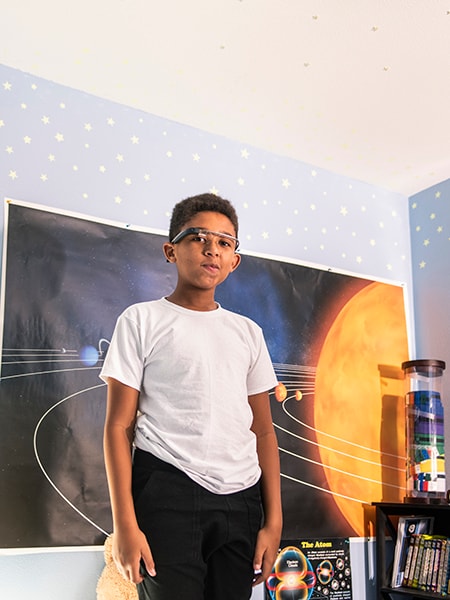
Google Glass lives on as a device to teach autistic children
The technology could help the children learn how to recognise emotions and engage directly with those around, in addition to measuring changes in behaviour
 Esaïe Prickett, wearing Google Glass, at his home in Morgan Hill, Calif., July 10, 2019. Prickett, who has autism, tested an app on the computerized glasses in a clinical trial meant to help him learn how to recognize emotions and make eye contact with those around him. (Cayce Clifford/The New York Times)
Esaïe Prickett, wearing Google Glass, at his home in Morgan Hill, Calif., July 10, 2019. Prickett, who has autism, tested an app on the computerized glasses in a clinical trial meant to help him learn how to recognize emotions and make eye contact with those around him. (Cayce Clifford/The New York Times)SAN FRANCISCO — When Esaïe Prickett sat down in the living room with his mother, father and four older brothers, he was the only one wearing Google Glass.
As Esaïe, who was 10 at the time and is 12 now, gazed through the computerized glasses, his family made faces — happy, sad, surprised, angry, bored — and he tried to identify each emotion. In an instant, the glasses told him whether he was right or wrong, flashing tiny digital icons that only he could see.
Esaïe was 6 when he and his family learned he had autism. The technology he was using while sitting in the living room was meant to help him learn how to recognize emotions and make eye contact with those around him. The glasses would verify his choices only if he looked directly at a face.
He and his family tested the technology for several weeks as part of a clinical trial run by researchers at Stanford University in and around the San Francisco Bay Area. Recently detailed in The Journal of the American Medical Association, Pediatrics, the trial fits into a growing effort to build new technologies for children on the autism spectrum, including interactive robots and computerized eyewear.
The Stanford study’s results show that the methods have promise and indicate that they could help children like Esaïe understand emotions and engage in more direct ways with those around them. They could also measure changes in behavior, something that has historically been difficult to do.
Experts believe that other new technologies may help in similar ways. Talking digital assistants like Amazon’s Alexa, for example, could help children who misuse their pronouns. But even as these ideas spread, researchers warn that they will require rigorous testing before their effects are completely understood.
©2019 New York Times News Service




